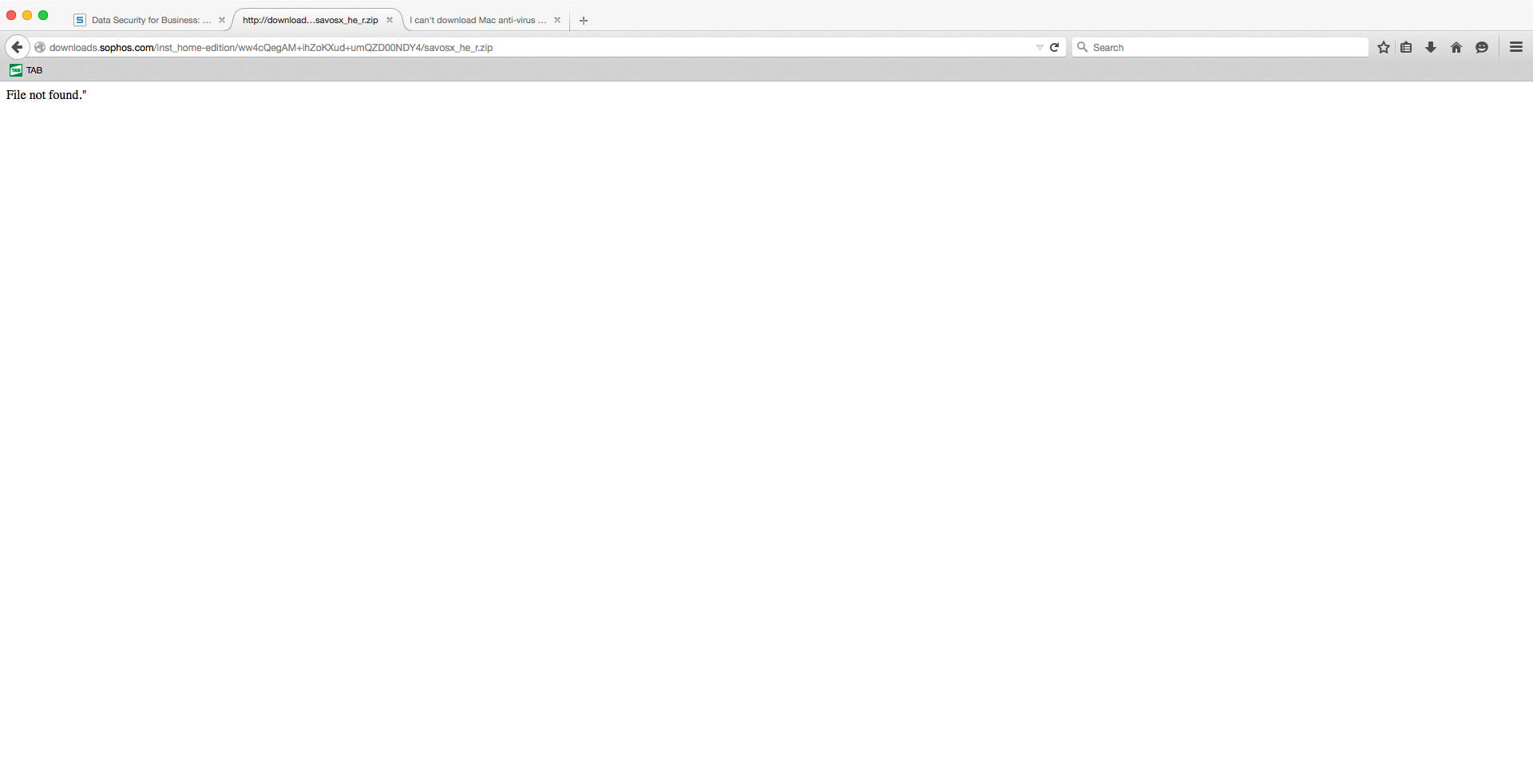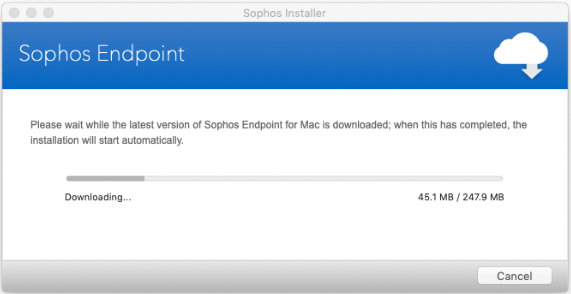The Download Client page contains links to download all the clients you might need.
Overview The Sophos General Authentication Client for Mac OS enables users using a Mac Operating System to log in to Sophos XG Firewall. Prerequisites: JDK or JRE version 1.6 or higher should be installed on the user’s machine. The following sections are covered. Applies to the following Sophos product(s) and version(s) Central Mac Endpoint, Sophos Anti-Virus for Mac OS X Operating systems MacOS 10.14.5+ What To Do Notarized Kernel Extensions are an additional security layer for all non-Apple kernel extensions that Apple has added as required in macOS 10.14.5.
The Device provides various options for user authentication. All the users are authenticated before they are provided with access to network resources. User authentication can be performed using a local database, Active Directory, LDAP, RADIUS, TACACS, eDirectory, NTLM or a combination of these. The Device also supports Single Sign On (SSO) for transparent authentication, whereby Windows credentials can be used to authenticate and a user has to sign in only once to access network resources. SSO can be used in Active Directory and Citrix or Terminal Services environments.

You can authenticate with Device using Captive Portal, Authentication Clients for Windows, Linux, Macintosh, Android and iOS platforms or Single Sign On (SSO).
You can download the following clients from this page:
Single Sign-On
Available only for Administrators.
Sophos Transparent Authentication Suite - Enables transparent authentication whereby Windows credentials can be used to authenticate and a user has to sign in only once to access network resources. This does NOT require a client installed on the user’s machine.
Sophos Authentication for Thin Client - Enables transparent authentication for users in Citrix or Terminal Services environment whereby network credentials can be used to authenticate and a user has to sign in only once to access network resources. This does NOT require a client installed on the user’s machine.
Authentication Clients
Available for all users.

Configuration of CISCOTM VPN Client for Apple iOS
Available only if Cisco VPN Client is enabled and allowed for logged-in user.
CISCOTM VPN Client is software developed by CISCO to establish encrypted VPN tunnels with highly secure remote connectivity for remote workers. Click Install to install the SF-related configuration for Cisco VPN Client in your iOS Device. Import this configuration into the Client so that it can communicate with the SF Device.
SPX Add-in
This feature is available only with a valid Email Protection subscription
This feature is available in Sophos Firewall Models XG105 and above, Cyberoam Models CR25iNG and above, and all Sophos UTM Models.
Click Download Sophos Outlook Add-in to download and install the SPX Add-in. The SPX Add-in simplifies the encryption of messages that contain sensitive or confidential information leaving the organization. The Add-in integrates seamlessly with the user’s Microsoft Outlook software, making it easy for users to encrypt messages through Sophos Firewall Email Protection.
Follow the steps given below to install the Add-in in Outlook:- Unzip the files to a temporary folder.
- For an interactive install, run setup.exe (users will be prompted for input).
- For an unattended install, the prerequisites are:
- Windows XP, Windows Vista, Windows 7, Windows 8 (both 32 and 64-bit) versions are supported.
- Microsoft Outlook 2007 SP3, 2010 or 2013 (both 32 and 64-bit) versions are supported.
- Microsoft .NET Framework 4 Client Profile.
- Microsoft Visual Studio 2010 Tools for Office Runtime 4.0.
- Now, please run the installer with the following parameters: msiexec /qr /i SophosOutlookAddInSetupUTM.msi T=1 EC=3 C=1 I=1.
Sophos antivirus software is one of the most well known and well respected anti-malware tools for the Mac. It’s distributed under the name Sophos Home to differentiate it from the company’s tools aimed at businesses and is available in free and premium versions. If you have downloaded it to try it out and no longer want it on your Mac, here’s how to remove it.
Sophos Virtual Machine Download
How to uninstall Sophos antivirus from your Mac
When you install Sophos Home on your Mac, it should also put an uninstaller on your boot drive. So the first step is to find that uninstaller.
- Press Command + Space or click on the Spotlight icon in the menu bar.
- Type ‘Remove Sophos Home’.
- When Spotlight finds it, select it and press Return.
- Click Continue when it launches.
- Type in your Mac admin user name and password.
- Wait for the uninstallation to complete and press Close.
If you use Sophos Home on other computers or think you might in the future, you should also remove your Mac from your Sophos Home dashboard.
- Log into your Sophos Home dashboard on a web browser.
- Choose the Mac from which you just uninstalled Sophos.
- Press Remove, then OK, when prompted.
Delete Sophos leftovers
Sometimes the uninstaller will return an error message, which can happen because of corrupted files or remains of files from previous Sophos installs or installations of other antivirus programs. In that case, Sophos advises running a script in Terminal to remove it. However, it also advises that this method should only be attempted by advanced users. Thankfully, there is another option for the rest of us.
If you can’t find the Sophos uninstaller on your Mac, and don't want to run a script, the other way to uninstall it quickly and easily is to use CleanMyMac X. The Uninstaller module in CleanMyMac X can uninstall any app, removing all the files and folders that are scattered around your system. It can also reset other misbehaving apps so they return to the state they were in when you first installed them. This is how it works.
Sophos Connect Download Mac
BTW, CleanMyMac X is notarized by Apple so it’s a perfectly safe app to use.

Sophos Free For Mac
- Install the free version CleanMyMac X by downloading it and following the instructions.
- Launch it from your Applications folder.
- Choose the Uninstaller module from the list on the left.
- Locate the app you want to uninstall in the list in the main window.
- Check the box next to the app.
- Press Uninstall.
Remember, we said earlier that one of the reasons the Sophos uninstaller might fail is that there are remnants of previous installations still on your Mac. Well, CleanMyMac X can help there, too. It has a ‘Leftovers’ feature which tracks down files and folders that were left over when you removed apps previously. To see them, click on Leftovers in the middle window. You can then choose the leftovers you want to remove by selecting them and pressing Uninstall.
Sophos Home is a popular antivirus app for the Mac. It has free and premium versions. However, there are several Mac anti-malware tools available and it may be that you no longer want Sophos on your Mac. If that’s the case, follow the steps above to uninstall it. And don’t forget to use CleanMyMac X to get rid of the remnants of files cluttering up your Mac.
